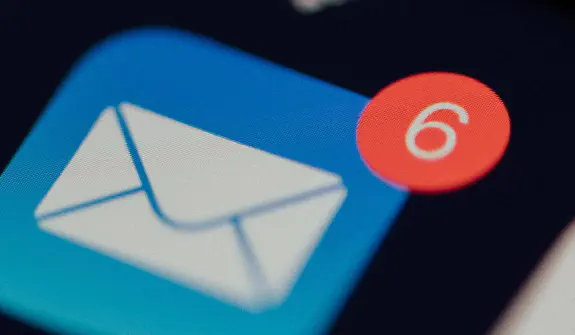Effective e-mail marketing strategies in 2024

In 2024, e-mail marketing remains one of the most effective channels for businesses to engage with their audience, build relationships, and drive conversions. Despite the rise of social media and messaging apps, e-mail marketing has proven to be resilient, evolving with changing technology and consumer behavior. In this article, we will dive into the strategies, trends, and best practices that e-mail marketers need to know to stay competitive in 2024.
The state of email marketing in 2024
E-mail marketing has undergone significant transformation in recent years. Advanced automation tools, AI-driven personalization, and better data analytics have made e-mail campaigns more precise and effective. Here’s a snapshot of the e-mail marketing landscape in 2024:
- Inbox overload continues: The average person receives over 120 e-mails daily, with inboxes being cluttered across personal and professional accounts. Cutting through the noise requires a personalized approach and compelling content.
- Increased privacy regulations: With the continued adoption of laws like the General Data Protection Regulation (GDPR) in Europe and the California Consumer Privacy Act (CCPA), privacy has become paramount. Marketers must be diligent about compliance with these regulations while ensuring transparent data collection and usage practices.
- Ai and machine learning: AI and machine learning are redefining how marketers approach e-mail marketing. From automating e-mail workflows to enhancing personalization, AI is becoming integral to creating highly effective campaigns.
- Mobile optimization: The vast majority of e-mails are now opened on mobile devices, with a mobile-first approach essential for ensuring that e-mails display correctly and engage recipients across all screens.
Key trends in e-mail marketing
Hyper-personalization with AI
AI-driven personalization is no longer just about addressing recipients by their first name. In 2024, e-mail marketers leverage AI to predict customer preferences, segment audiences based on behavioral data, and craft highly targeted content. Hyper-personalization involves creating e-mails that feel tailor-made for each recipient by considering past interactions, purchase history, browsing behavior, and demographic data.
Practical tips for implementing hyper-personalization:
- Use AI-powered tools like Persado, Phrasee, or HubSpot to analyze customer data and generate personalized subject lines, e-mail content, and CTAs.
- Create dynamic content blocks within your e-mails that change based on the recipient's preferences, ensuring relevance.
- Leverage predictive analytics to recommend products or content the recipient is most likely to engage with.
Interactive e-mails
Interactive e-mail elements like polls, carousels, and embedded videos are becoming mainstream in 2024. These elements not only engage recipients but also allow them to interact with the e-mail content without leaving their inbox. This trend improves click-through rates and creates a more immersive user experience.
Best practices for creating interactive e-mails:
- Ensure all interactive elements are mobile-friendly and function seamlessly across different e-mail clients.
- Use AMP (Accelerated Mobile Pages) for e-mail to create a more dynamic experience, enabling recipients to take actions directly within the e-mail, such as filling out forms or booking appointments.
- Incorporate engaging elements like sliders, collapsible menus, and hover effects to make e-mails more visually appealing.
Omnichannel marketing integration
In 2024, successful e-mail marketing doesn't exist in isolation—it integrates seamlessly with other marketing channels such as social media, SMS, and push notifications. E-mail is increasingly being used as part of a broader omnichannel strategy, where brands create a cohesive experience across touchpoints to engage customers at different stages of their journey.
How to implement omnichannel marketing integration:
- Use marketing automation platforms like Klaviyo or Salesforce Marketing Cloud that offer omnichannel capabilities to manage cross-channel campaigns.
- Sync e-mail campaigns with social media efforts by promoting e-mail newsletters on social channels or using social media to capture e-mail subscribers.
- Implement behavior-triggered e-mails that are part of a larger journey, such as cart abandonment e-mails followed by retargeting ads.
Zero-party data collection
As privacy concerns grow and third-party cookies continue to be phased out, marketers are turning to zero-party data collection—data that customers willingly and proactively share with brands. In 2024, this data becomes invaluable for crafting personalized e-mail campaigns and understanding customer preferences.
Strategies for effective zero-party data collection:
- Use e-mail surveys, quizzes, and preference centers to gather data directly from subscribers.
- Offer incentives such as discounts or free resources in exchange for information about customer preferences and interests.
- Ensure transparency with how the collected data will be used and highlight the benefits subscribers will receive from sharing their preferences.
Privacy and data protection
E-mail marketers in 2024 must navigate an increasingly complex landscape of data privacy regulations. While GDPR and CCPA have been around for a few years, new privacy laws continue to emerge globally, making compliance a top priority. Marketers need to ensure that they have explicit consent for data collection, provide clear opt-in/opt-out options, and be transparent with their data usage policies.
Best practices for ensuring compliance:
- Implement double opt-in procedures to ensure that subscribers are genuinely interested in receiving your e-mails.
- Maintain detailed records of consent and make it easy for subscribers to update their preferences or unsubscribe.
- Regularly audit your e-mail marketing practices to ensure compliance with regional privacy laws, particularly if you have a global audience.
E-mail marketing automation in 2024
Automation continues to be one of the most important tools in an e-mail marketer’s toolkit. E-mail automation streamlines processes like drip campaigns, triggered e-mails, and personalized product recommendations, saving time and boosting engagement.
Key automation workflows for 2024:
- Welcome series: A series of automated e-mails sent to new subscribers to introduce them to your brand and guide them toward their first purchase.
- Cart abandonment: Automated e-mails reminding customers to complete their purchase after abandoning their shopping cart.
- Post-purchase follow-up: Sending automated e-mails after a purchase to request reviews, offer related products, or provide customer support information.
- Re-engagement campaigns: Targeting inactive subscribers with a series of e-mails designed to re-engage them with your brand.
Best practices for e-mail marketing success in 2024
Crafting compelling subject lines
Subject lines remain one of the most critical factors determining whether your e-mail gets opened. In 2024, subject lines need to be short, personalized, and attention-grabbing while conveying the value of the e-mail content.
Tips for crafting winning subject lines:
- Keep subject lines under 50 characters to ensure they display fully on mobile devices.
- Use personalization tokens to include the recipient's name or location.
- A/B test subject lines to see which format resonates best with your audience.
Content relevance and value
Content is still king in e-mail marketing, but in 2024, relevance is just as important as quality. Recipients expect content that adds value, whether it’s through useful information, personalized offers, or entertaining stories.
Content strategies to maximize engagement:
- Segment your audience based on demographics, purchase behavior, and engagement levels to ensure content relevance.
- Provide educational content that helps subscribers solve problems, learn something new, or improve their lives.
- Balance promotional e-mails with value-driven content, such as industry news, tips, or exclusive access to resources.
Testing and optimization
Testing is essential for improving the performance of your e-mail campaigns in 2024. Regular A/B testing allows marketers to optimize everything from subject lines and e-mail layouts to call-to-action (CTA) buttons and sending times.
Key elements to test:
- Subject lines: Test different tones, lengths, and personalization elements.
- E-mail design: Experiment with different layouts, colors, and fonts to see what resonates most with your audience.
- Timing and frequency: Test different sending times and e-mail frequencies to find the sweet spot for engagement.
The future of e-mail marketing beyond 2024
E-mail marketing shows no signs of slowing down beyond 2024. Emerging technologies such as augmented reality (AR), virtual reality (VR), and the metaverse will open new opportunities for immersive e-mail experiences. Additionally, advancements in AI will continue to refine personalization, making e-mail marketing even more efficient and customer-centric.
Conclusion
E-mail marketing in 2024 is all about creating personalized, relevant, and engaging content that cuts through the noise of crowded inboxes. By leveraging AI, interactive elements, omnichannel strategies, and privacy-friendly practices, marketers can stay ahead of the curve and maximize the effectiveness of their campaigns. As technology continues to evolve, e-mail marketers must remain adaptable, embracing new tools and strategies to ensure they maintain a meaningful connection with their audience. Let us help you enhance your email marketing strategy and keep your campaigns on the cutting edge.
Resources
- Brevo - E-mail Marketing & Automation (opens in new window)
- Mailchimp - E-mail Marketing & Campaigns (opens in new window)
- Klaviyo - E-mail Marketing Automation & Personalization (opens in new window)
- ActiveCampaign - Customer Experience Automation (opens in new window)
- GetResponse - E-mail Marketing, Automation & Landing Pages (opens in new window)
- Constant Contact - E-mail Marketing & Online Marketing Tools (opens in new window)
- ConvertKit - E-mail Marketing for Creators (opens in new window)
- Campaign Monitor - E-mail Marketing Platform (opens in new window)
- AWeber - E-mail Marketing & Automation (opens in new window)
- Drip - Ecommerce e-mail Marketing Automation (opens in new window)

